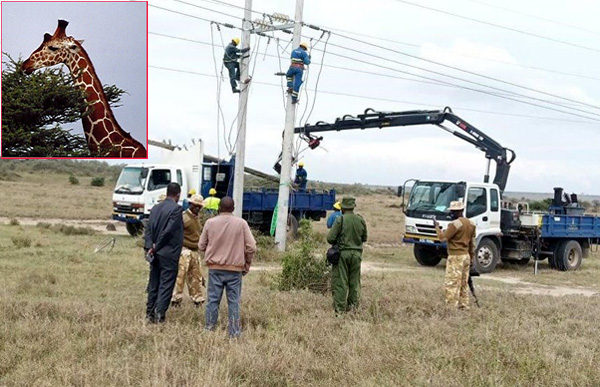
The pandemic’s effects on Africa’s wildlife is curious and surprising. Later this year I’ll be returning to the Serengeti and areas nearby to see for myself the reports I’ve compiled.
Last week I reported on how the lack of tourists seems to have altered big game behavior. So what has that meant and what will it mean in the near future to the people living in Africa?
No surprise that the people living near big game aren’t happy. More uncontrollable bulldozers, randomly moving sky-high cranes and famished beasts wouldn’t be welcome by any of us into our backyards.
Kenya’s Laikipia region is one of the most precious biodiversity areas in the world, particularly with regards to big game. Super endangered rhino, rare giraffe and zebra species are found nowhere else, plus a host of uncommon game like gerenuk, oryx and hartebeest thrive here.
This region is developing faster than any other in East Africa, because of the oil discovered in the area and the rapid infrastructure that’s being built by the Chinese owners.
A new airport in the far north and modern roads has transformed the region which until a decade ago was one of the most undeveloped in all of Africa. Undoubtedly this was one of the reasons such rare game thrived here.
The main problem, now, is that this rare wildlife has nowhere else to go. This is unique habitat, a desert in the making. Several rivers persist in dramatic seasonal ways, and abrupt changes in altitude accentuate the changing climate. The unusual wildlife which has adapted to the changes which began probably a thousand years ago can’t hack it the more normal habitats found so many other places.
A couple weeks ago several very rare giraffe were found electrocuted beside a new road with power lines draped over them.
As tragic as this was it does not begin to portray the difficulties that local communities are facing with increased animal populations. Losing power is one thing. Losing children as they walk to school trampled to death by elephant is quite another.
Educated Kenyans are remarkably pro-conservationists compared to educated Africans elsewhere in the continent; at least that’s my opinion. But their enthusiasm for conservation is being seriously challenged.
There is a real movement growing among the “conservationists” of Kenya not to ignore conservation of big game, but to “temper it” to modern realities. It’s now a political issue. For the first time in a long while I’m hearing the word “culling” used.
Last week I described how the pandemic had actually decreased poaching. Part of the explanation is that much big game in Africa has begun to lose its habituation to people because there simply have not been any tourists around.
At the same time animal populations are growing. Not just because there’s less poaching but because the year of the pandemic was pretty normal as far as climate goes. There were neither serious droughts or unusual cyclonic storms, two conditions that are increasing in Africa as a result of climate change and jeopardize normal wild animal breeding. But not last year.
Less tourist meant less rangers as funding dried up. Less poaching, less tourists and less rangers collapsed the “invisible fences” that normally surround the unfenced big game reserves.
So giraffe walk into power lines and elephants step on kids.
Elaborate emergency programs are developing to thwart the movement against conservation by quickly minimizing human/wildlife conflict.
One of the most interesting is being developed by the London Zoological Society. The society is manufacturing special cameras that can detect elephants at quite a distance and send warning signals to nearby villages so that people are prepared.
It’s not as easy as it seems. Images are still difficult for most computer programs to recognize well. Especially at a distance, a freight truck and an elephant will be similarly identified by non-artificial intelligent cameras. Artificially intelligent cameras are prohibitively expensive.
What the London Zoo is doing is using infra-red cameras which detect body heat. The particular heat signature of an elephant is unique — much different than a freight truck! — and easy for simple computers to recognize. And a lot cheaper.
They’re still haggling over the costs and efficacy of raising power lines above the 3-meter height of the larger giraffes. But the London Zoo has already begun deploying the new cameras to help villages detect elephant.
There has always been human/wildlife conflict, but the modern age exacerbated them and the pandemic has given us a year of stark examples. Let’s hope the pandemic will end having unexpectedly contributed to new and acceptable mitigation efforts so that Africa’s big game can be sustained.